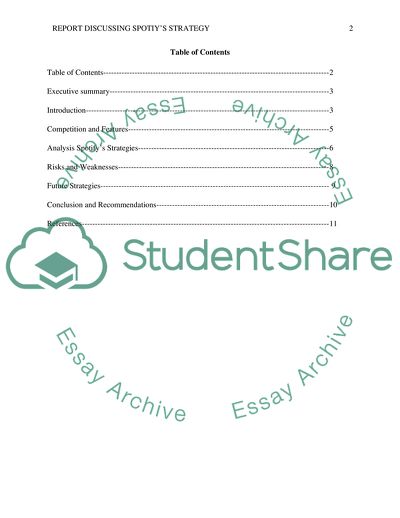Cite this document
(Report discussing Spotifys strategy Essay Example | Topics and Well Written Essays - 2000 words, n.d.)
Report discussing Spotifys strategy Essay Example | Topics and Well Written Essays - 2000 words. https://studentshare.org/e-commerce/1798608-report-discussing-spotifys-strategy
Report discussing Spotifys strategy Essay Example | Topics and Well Written Essays - 2000 words. https://studentshare.org/e-commerce/1798608-report-discussing-spotifys-strategy
(Report Discussing Spotifys Strategy Essay Example | Topics and Well Written Essays - 2000 Words)
Report Discussing Spotifys Strategy Essay Example | Topics and Well Written Essays - 2000 Words. https://studentshare.org/e-commerce/1798608-report-discussing-spotifys-strategy.
Report Discussing Spotifys Strategy Essay Example | Topics and Well Written Essays - 2000 Words. https://studentshare.org/e-commerce/1798608-report-discussing-spotifys-strategy.
“Report Discussing Spotifys Strategy Essay Example | Topics and Well Written Essays - 2000 Words”. https://studentshare.org/e-commerce/1798608-report-discussing-spotifys-strategy.


